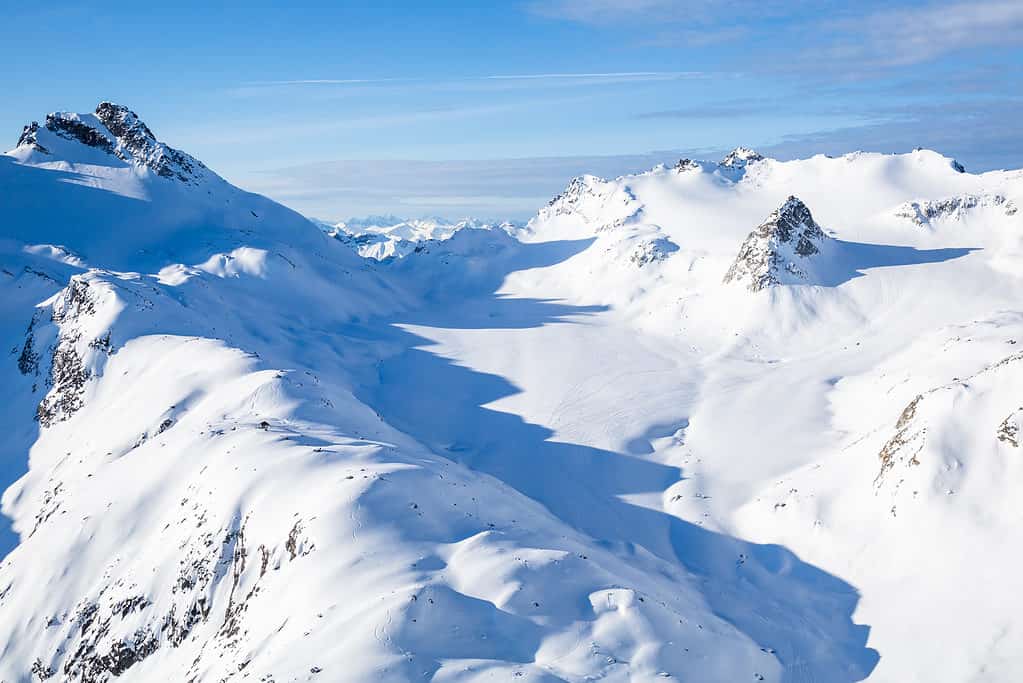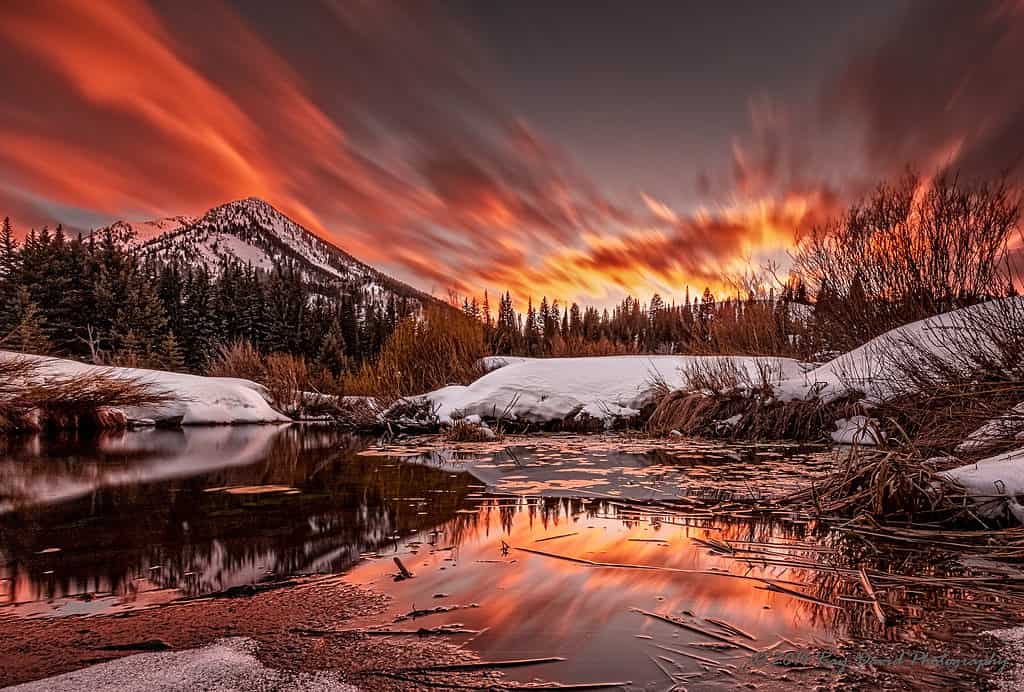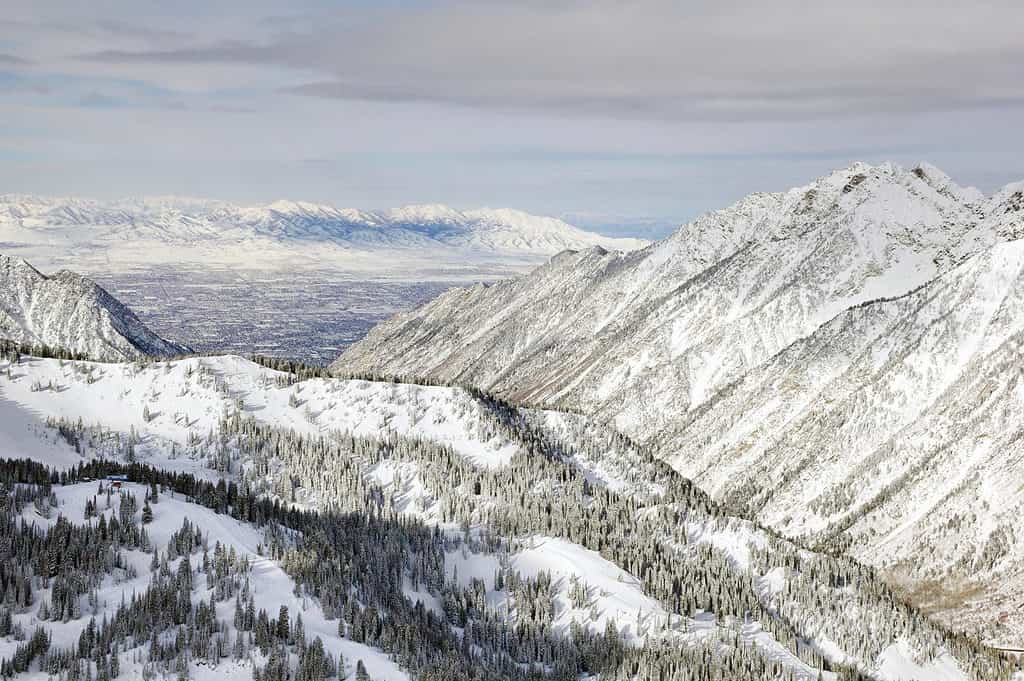It’s no secret that Utah is home to some of the best skiing and snowboarding in the world. From the steepest runs and magnificent powder to world-class terrain parks, Utah is a snow lover’s paradise. Ski resorts throughout the region are renowned for providing incredible experiences to all kinds of adventurers, from beginners to experts. From Sundance resort in the north to Snowbird near Salt Lake City, each destination offers something special that appeals to snow enthusiasts of every kind. But where is the snowiest place in Utah? Keep reading to find out!
Snow in Utah
Utah is a state of incredible contrasts when it comes to snowfall. The western half of the state is primarily high desert, where snowfall averages between 15 and 20 inches each winter. But head east towards the Rocky Mountains and you’ll find yourself surrounded by areas that receive several hundred inches of snow annually. This great variation in weather brings unique experiences to all who travel throughout this beautiful region — from exploring dry desert canyons to skiing down the majestic mountains that tower over Utah’s eastern skyline.
In addition, while much of Utah experiences an average of 20 inches of snow or less each winter, the north and central regions often receive well over 100 inches of snow in a single season. This makes for some truly unforgettable and unique winter getaways for those who don’t mind bundling up.
Utah: Home to the “Greatest Snow on Earth”

The light and fluffy texture of Utah’s snow is due to its low humidity.
©iStock.com/DCrane08
Utah is renowned for having the “Greatest Snow on Earth”, thanks to its location along the Wasatch Mountains, which receive an average of 500 inches of snow each year! Additionally, Utah’s geography plays a role in bringing more snowfall to the state thanks to its numerous mountain ranges, which cause orographic lift and increase precipitation. Together, these elements contribute to huge amounts of snow annually.
The light and fluffy texture of Utah’s snow is due to its low humidity and gives skiers and snowboarders one of the best experiences in terms of speed, agility, and control. Moreover, due to its sunny days combined with cold nights and low humidity, Utah’s snow stays dryer longer than that of other areas, allowing skiers and boarders to enjoy their time on the slopes even after a few days’ worth of powder.
With an average of 18 powder days throughout the winter and more than a foot of snow falling every five days, it’s no wonder so many skiers flock to Utah. The combination of great skiing conditions and beautiful scenery make Utah a destination for snow lovers from all over the world.
The Snowiest Place in Utah: Big and Little Cottonwood Canyons
While Salt Lake City (Utah’s state capital) usually gets around 5 feet of snow each year, just a few miles away the Big and Little Cottonwood Canyons receive 40 feet of snow each year! While it is tough to know which location holds the title for the best snow, everyone can agree that the higher levels of the Cottonwood Canyons are home to some of the most impressive snowfall around. The storms here are frequently colder, which creates an ideal environment for the lightest snow to rest on top of higher-density snow — perfect for some of the best powder skiing in the world!
Located in northern Utah, Big and Little Cottonwood Canyons offer stunning views, access to a variety of activities, and (of course) lots and lots of snow. Thanks to their elevation and the presence of snow-capturing shadows created by surrounding mountains, these canyons can receive as much as 500 inches of snow each winter. This is why four of Utah’s premier ski resorts are nestled within Big and Little Cottonwood Canyon.
These Canyons are also home to all kinds of wildlife. Some of the larger animals here are mountain lions, black bears, moose, and mountain goats. There are also a lot of small animals like foxes, coyotes, bobcats, porcupines, otters, beavers, raccoons, badgers, weasels, rabbits, and pikas. And don’t forget the birds! There are owls, hawks, eagles, geese, and ducks, just to name a few. Closer to the ground you’ll find salamanders, lizards, tarantulas, and rattlesnakes.
Big Cottonwood Canyon

Each year Big Cottonwood Canyon hosts hundreds of thousands of people who come for the snow.
©iStock.com/RayDavidPhotography
This 12-mile canyon is just a few miles southeast of Salt Lake City and was formed by Big Cottonwood Creek. It is a unique and rocky V-shaped canyon with incredible biodiversity, including many rare plants and endemic plant species. For example, it is the only place in the world where the Wasatch shooting star (Dodecatheon dentatum var. utahense) grows.
When Scotsman William Stuart Brighton emigrated to America in 1855, he established mining rights in Big Cottonwood Canyon, along with Brighton Village and the Brighton Hotel. Over time, it became a popular recreational area, and today visitors come from all over the world to enjoy its natural beauty. The city of Brighton only has between 200 and 300 residents, but each year Big Cottonwood Canyon hosts hundreds of thousands of people who come for the snow.
Big Cottonwood Canyon is a paradise for all winter sports enthusiasts! It is home to two of the most premier ski resorts in the region, Solitude Mountain Resort and Brighton Ski Resort. On average, Solitude Mountain Resort receives 313 inches of snow each year, and Brighton Ski Resort receives around 346 inches a year. Along with long runs, the two resorts also offer terrain parks, tubing hills, cross-country skiing trails, and incredible views of Big Cottonwood Canyon’s rugged landscape.
Little Cottonwood Canyon

This beautiful and rocky terrain receives an average of 497 inches of snow each year.
©iStock.com/Simplyphotos
Nestled deep in the Wasatch Mountains, Little Cottonwood Canyon was carved out of the mountains by a giant alpine glacier, around 15,000 to 20,000 years ago. Today, this beautiful and rocky terrain receives an average of 497 inches of snow each year and is home to two of Utah’s most renowned ski resorts — Alta Ski Resort and Snowbird Ski Resort.
The city of Alta started out as a mining town in 1865, but by the 1930s only one resident remained: George Watson. Watson donated much of his land to the U.S. Forest Service, on the condition that it would be used as an area for skiing.
Alta receives around 325 inches of snow each year and experiences 265 days where temperatures usually drop below 50 degrees Fahrenheit. Because the town is located near the Great Salt Lake, it experiences significantly heavier snowfall than average, with an annual average of more than 507 inches. Snow covers the ground in Alta for 97 days out of the year, which is 26.6% of the time.
Today, Alta has a population of between 200 to 300 residents, and hundreds of thousands of visitors flock to Little Cottonwood Canyon for winter adventures. From long runs to steep chutes, couloirs, and glades, Alta and Snowbird have terrain perfect for all levels of ability. With incredible views of Little Cottonwood Canyon’s rugged landscape, it also offers numerous activities like tubing, night skiing, and snowshoeing.
What Was the Biggest Snowfall in Utah?
While Big and Little Cottonwood Canyons are the snowiest places in Utah, a single snowstorm from back in 1949 might have given them a run for their money. The three-day blizzard hit Utah in January of that year, flattening houses and breaking windows with nearly 10 feet of snow built up along roads and in driveways! The temperature quickly plummeted, and snowplows could not clear the frozen snow. People in Northern Utah were stranded, and Cargo planes from the U.S. military had to drop hay to aid starving animals as part of “Operation Haylift.”
Other Snowy Places in Utah
Utah also benefits from a variety of weather patterns. With ski resorts ranging from near the Idaho border down to Zion National Park, Utah can get deep powder from multiple types of storms. And while Utah is home to so many ski resorts, each one is entirely different and offers unique types of terrain and experiences. From the steep mountains of the Cottonwood Canyons to the luxurious quality of Deer Valley’s snow, there are plenty of options.
In addition, Utah is fortunate enough to have 10 ski resorts within an hour of the newly renovated Salt Lake City International Airport. That means that those living out-of-state can fly into the airport in the morning and be skiing by noon. There is nowhere else that offers such easy accessibility.
Obviously, these areas are attractive winter destinations, but they are not the only places in Utah where you can find great snow. In fact, all across the Wasatch Range there is often copious amounts of snow! Park City, for example, is just on the other side of the Wasatch Crest from Big and Little Cottonwood Canyons. You can take a chairlift straight from Park City’s Main Street to the Park City Mountain Resort.
Utah’s Snowiest Hidden Gems
There are also many hidden gems in Utah, like Beaver Mountain (just east of Logan, Utah), which receives over 400 inches of snowfall each year. In Ogden Valley (about an hour from the Salt Lake City International Airport) you can visit Powder Mountain, or “PowMow”, which is one of the largest resorts in North America by acreage.
Sundance Mountain Resort in Provo, Utah, is about an hour south of Salt Lake City and offers some of the most stunning alpine views you’ll ever see. And Brian Head Resort receives over 360 inches of snow that covers over 650 acres, offering unique and extraordinary views of white snow on the famous red rocks of southern Utah.
Tips for Making the Most of Your Time in Utah’s Snowy Paradise
Avalanches, amazing powder, and snow-capped mountains — it’s no wonder why many adventurers are heading to this snowy paradise! But if you want to make the most out of your visit, there are some tips that can help. For example, make sure you double-check any avalanche forecasts prior to your trip, as well as plan for poor visibility days by having a backup route available. If you’re looking for a fresh powder experience, go early to have first-track opportunities in some of that delicious untouched snow!
In addition, make sure you wear the proper clothing and outerwear to keep warm and comfortable in these extreme temperatures. With temperatures sometimes dipping below freezing — even during the day — it’s important to stay prepared and dress warmly in layers, which help to trap heat and keep you cozy. Start by wearing a thin base layer that fits snugly against the skin before adding a robust insulation layer like a parka or coat. Finally, if needed, add another protective cover like a windbreaker for extra protection from cold winds or wet weather.
Up Next:
- First Snow in Utah: The Earliest & Latest First Snows on Record
- Discover the Snowiest Cities in the United States
- What is the Snowiest Place on Earth?
The photo featured at the top of this post is © yoshimedia/Shutterstock.com
Sources
- World Population Review, Available here: https://worldpopulationreview.com/state-rankings/average-snowfall-by-state
- Ski Utah, Available here: https://www.skiutah.com/
Thank you for reading! Have some feedback for us? Contact the AZ Animals editorial team.






